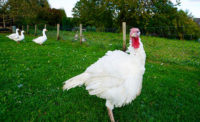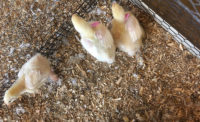William Shakespeare was an astounding playwright with the incredible ability to infuse ambiguity into every piece he wrote. In one of his best-known plays, “Romeo and Juliet,” he coined the term “sweet sorrow,” perfectly summing up the lead characters’ mutual desire. First with the sweet mourning following the parting of a loved one, and second, by the joy promised upon reuniting.
A similar “sweet sorrow” is often experienced in animal welfare auditing. At first, there may be sorrow because of a deficiency in an area of care or a reluctance to audit at a specific site, but just as Shakespeare’s star-crossed lovers discover, there is always hope for identification of a better system to suit changing audit needs.
An audit is an examination of current practices using a tool or document as a standard, usually performed by a single entity and used every day. We audit programs to ensure proper employee training. We audit to keep up-to-date documents on food safety. Although the reasons for these audits seem to be self-explanatory and necessary, there is still some reluctance to audit for animal welfare. This may occur because there appears to be no immediate benefit from completing them. So why is this the case?
The main question I get asked is, “Why do we need to audit our animal welfare? I know I treat my animals with the utmost respect, and I don’t think I’m doing anything wrong.”
I simply respond, “Why do we audit food safety? In industry, we have standards and guidelines to uphold, but how do we know that all of the necessary checkpoints are correctly met?”
If we had a completely fail-safe system, we would never hear about foodborne illness outbreaks or recalls related to products defects. Programs are followed to ensure good people do not unintentionally do bad things, and audits are performed to ensure programs are implemented correctly.
Of course, auditing itself is neither a foolproof nor sexy job. Audits give a small snapshot in time of how the plant or producer is doing. Because it only gives a quick Polaroid, it is important to remember auditing must be completed alongside best management practices and must continue regardless of the outcomes of the audit.
There are several characteristics of a good audit that should be kept in mind when choosing an auditing tool. Audits must have clear objectives that are based on evidence and facts so the entity performing the audit can make informed decisions based on the standards outlined. This allows the auditor to be a fact-finder, not a fault-finder. Audits are not performed to assign blame, they assess whether management practices are sufficient and working.
Regardless of audit type, auditor choice is important. Internal audits are meant to be completed by someone within the company for frequent snapshots of how the company is complying with its established program. External audits, or third-party audits, are usually the type that most producers fear. It is important to remember that if the internal audits are completed in an unbiased manner with non-conformances being corrected, there should be no reason to fear an external audit. Therefore, it is important to set up a good internal auditor so that regardless of who appears during a third party audit, you can rest assured that the audit will be performed in the same manner with a similar outcome.
Some beneficial characteristics of an internal auditor are integrity, objectivity, competence and credibility. The auditor should have no preconceived notions while performing the job and should be independent of the task outcome, meaning, if they find areas in need of correction, they will not intentionally hide deficiencies for fear of losing their job. This is also where auditing becomes a difficult task since they may be asked how to correct actions or non-conformances. But this is not as simple as you may think. The auditor is there to audit against the program being implemented. They are not there to be a consultant; this is true for internal and external auditors.
The internal auditor should be trained to write complete reports that can be referred to later so that problem areas can be correctly identified. This includes making notes where the response may be recorded as a “zero.” It also requires them to point out deficiencies the moment they see something wrong. There should be no secrecy. A good auditor should show everyone the problems to ensure there is no point in time where the producer is surprised or shocked during a follow-up meeting.
In addition, it is important to further educate the auditors, internal or otherwise, and the producers to keep everyone up to date on the latest standards. With several animal welfare-related litigations coming within the next few years, it will be important to work together to make the transitions as smooth as possible. Just as with food and worker safety, auditing is in a fluid state and it is important to remember why we should take the extra time to complete internal audits.
If you find yourself in a state of “sweet sorrow” in your animal welfare-auditing program, keep the focus on the ultimate outcome of improved animal welfare. It’s hard to accept something that will have both ups and downs; however, with diligence, the results will continue to show a steady state of improvement and maintenance in the state of animal welfare standards that resonates as pride. NP






Report Abusive Comment